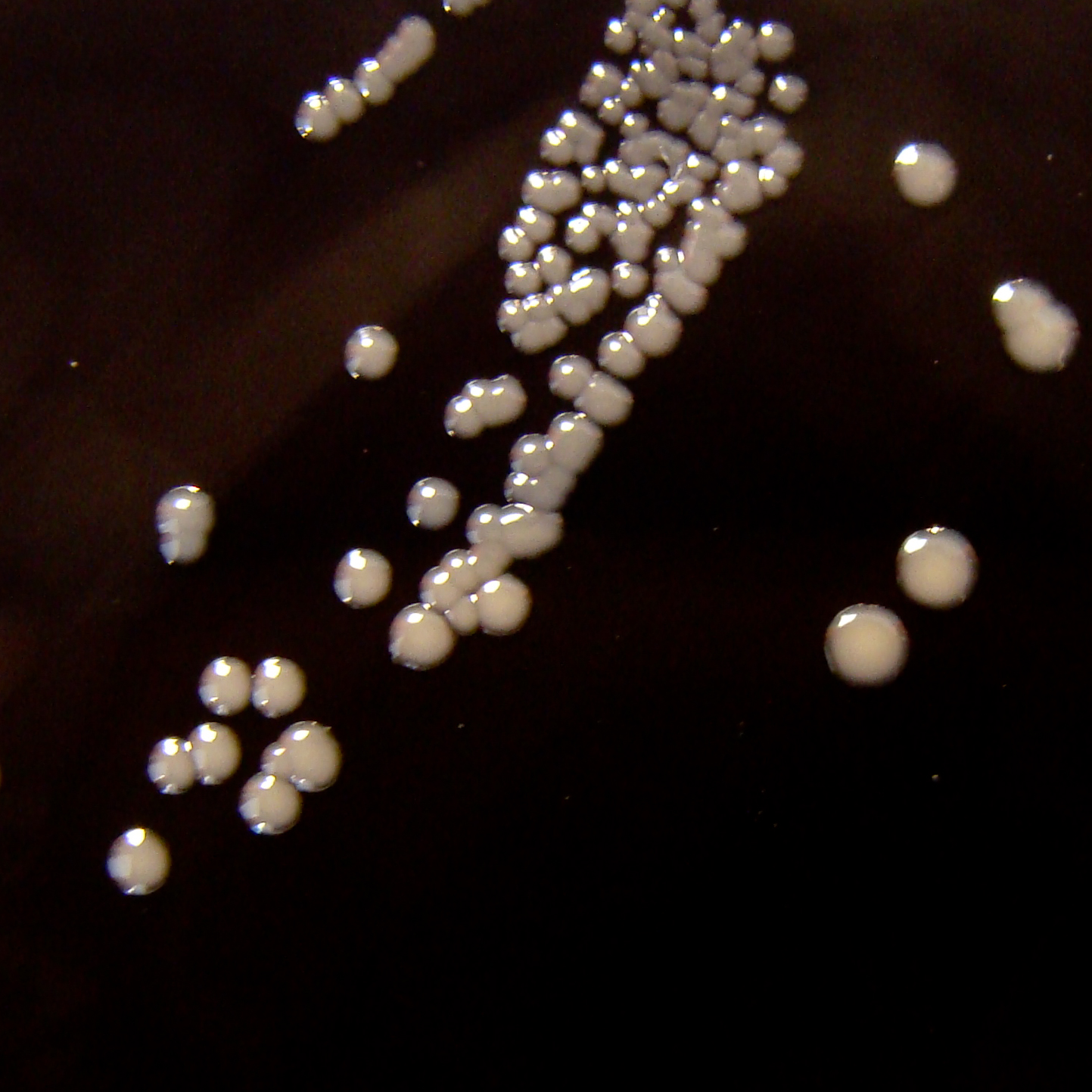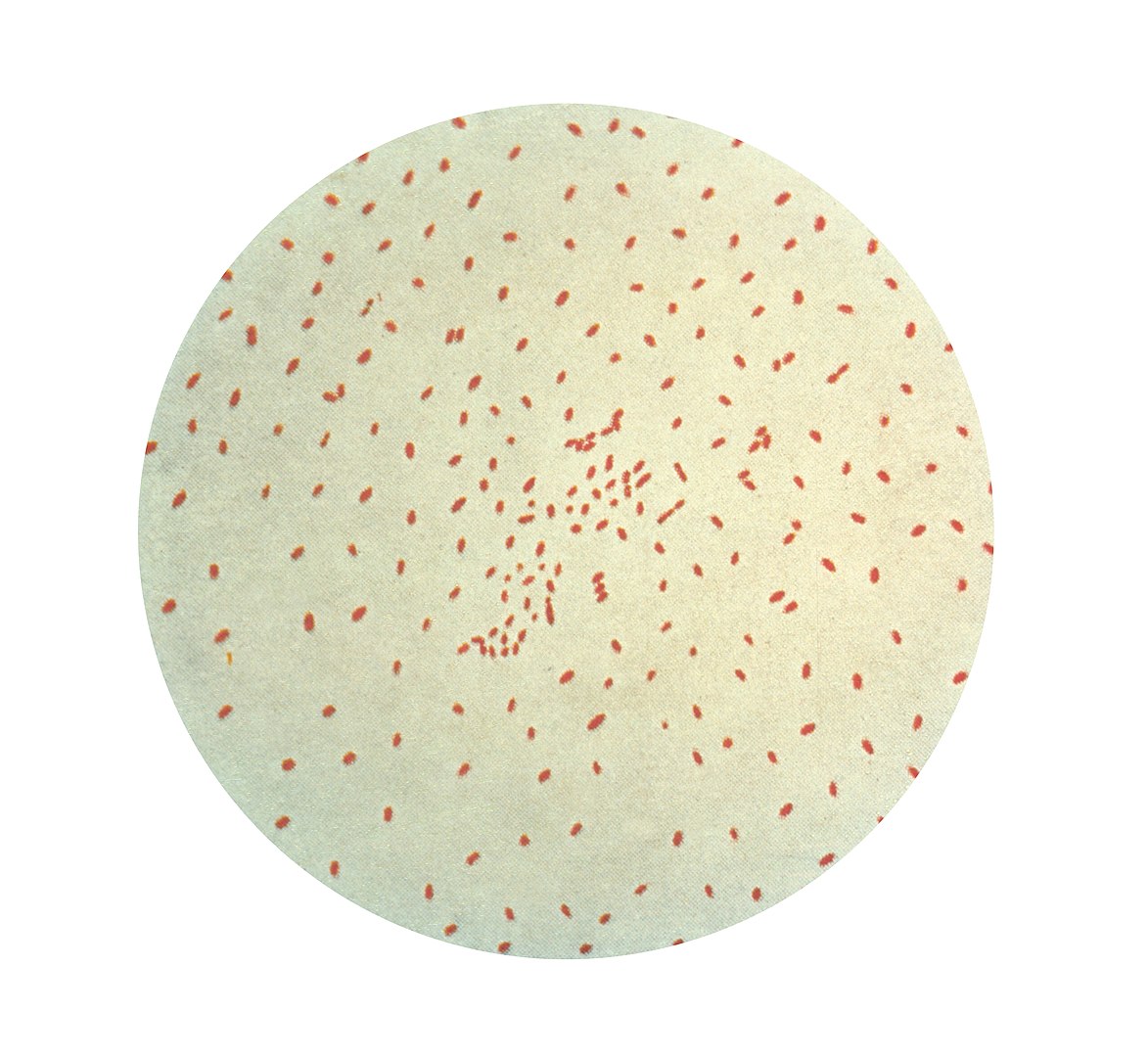Playlist
Show Playlist
Hide Playlist
Bordetella Pertussis
00:01 Bordetella Pertussis, a bacteria. Bordetella Pertussis is a gram-negative, encapsulated coccobacillus, meaning that it is part rod-shaped and part coccus-shaped and you can see a picture of that on the right side of the screen. 00:16 Perhaps the best way to describe the shape itself is as an oval-shaped. 00:20 When growing, it is a facultative aerobe and it does require growth within cells. 00:27 It also is oxidase-positive and it grows best if it grows at all on specialized agar as you see listed there. 00:35 How does the disease occur in terms of pathogenesis? And this is interesting because Bordetella Pertussis has several different toxins, all which have the ultimate function of poisoning the ciliated epithelial cells and causing the body to hypersecrete both mucus and inflammation so that it creates excessive respiratory secretions and poisons the ability to clear them. 01:04 So, as you can see here, the first step is for Bordetella Pertussis to bind to ciliated epithelial cells. 01:12 On the bottom part of the slide, you see fully functional respiratory epithelium standing in the line On the bottom part of the slide, you see fully functional respiratory epithelium standing in the line On the bottom part of the slide, you see fully functional ciliated epithelium standing in line and the cilia normally would be waving under ATP generation creating what’s called the mucociliary elevator to elevate mucus from the lower respiratory portions up to the higher part of the trachea where it can be cleared by a normal expressive cough or swallowed normally. 01:37 However, if Bordetella Pertussis binds to the ciliated cells, then, ultimately, it poisons those ciliary functions, hypersecretes inflammatory secretions and then, causes downstream effects which we’ll talk about very shortly. 01:54 In addition to being effective at creating this pathogenesis, it also is very effective at surviving and because Bordetella Pertussis is an intracellular organism, it can evade many parts of the immune system quite successfully. 02:10 Now, let’s look at those pathogenic factors. 02:14 The first is the pertussis exotoxin which acts by inhibiting the G protein. 02:20 G protein’s major responsibility is to suppress or control production of cyclic AMP. 02:27 So, if one inhibits the off switch or inhibits the inhibitor, then, cyclic AMP can be expressed without much suppression within the respiratory cells. 02:40 This causes extreme overchange of fluids followed by mucous secretions and that buildup of inflammatory mass within the respiratory tree. 02:49 Bordetella Pertussis also has hemagglutinin which has effects on coagulation and also on vascular permeability and it creates an adenylate cyclase toxin which also impacts the function of cyclic AMP and in this case, has downstream effects on blocking effector function within the immune system. 03:11 However, the key part of Bordetella Pertussis’ function is the tracheal cytotoxin which is managed and mentioned before, which was mentioned before, damages the ciliated tracheal cells. Research has demonstrated that organisms, Bordetella organisms in which the specific function of tracheal cytotoxin is removed or blocked are unable to cause the disease we know of as Pertussis, as whooping cough. 03:39 But if one restores function to the tracheal cytotoxin, then, the entire pathogenicity is restored. 03:46 So, critical, necessarily, and sufficient is the tracheal cytotoxin to the disease expressed by Bordetella Pertussis. 03:54 And in addition, it has an endotoxin which is part of what induces the pyrogenic or the fever responses. 04:02 So, what does Pertussis look like? First of all, the organism itself is transmitted through aspiration and inhalation of respiratory droplets and these are the fine respiratory droplets such as can persist in midair for quite long distances and for quite long times. 04:20 Patients at risk for developing Pertussis actually can be anybody. 04:25 However, if one has some amount of seroprotection from vaccination or immunomodulatory effects, then, one can avoid disease. 04:35 Therefore, those at risk for getting Pertussis are those who are unvaccinated, under-vaccinated, meaning immunity has waned, and those who are immunosuppressed which may be children and adults, or even newborn babies. 04:49 In fact, the highest risk of Pertussis is in babies up to age two months prior to their very first Pertussis vaccine if they are exposed to other family members who themselves have Pertussis. 05:02 The incubation period, seven to 10 days, typically, about a week. 05:06 And then, when infection develops, it is associated with very prominent lymphocytosis. 05:12 This by itself although not unique, is certainly part of the reason that Pertussis can be mistaken for a viral infection, therefore, limiting its evaluation, its diagnosis, and its potential treatment and support. 05:27 Disease progression for Pertussis is quite unique as it occurs in three stages, each of which has a different phenotype, a different appearance. 05:37 Stage one is so called the catarrhal stage and this may last one to two weeks. 05:42 When you think catarrhal stage, think really bad cold. 05:47 So, runny nose, low grade fevers, maybe a bit of the cough but not the classic cough and it is at this time this non-specific I might just have a virus stage, the patients are the most contagious and they are truly really contagious. 06:02 Attack rate for a family exposed to one family member with Pertussis is well over 50, 5-0 percent. 06:11 The next stage, stage two is the paroxysmal stage. 06:15 This may be anywhere from just one week if one is lucky or up to six weeks, it could even go up to 10 weeks or so. This is the stage in which the classic cough, the Pertussis paroxysmal or whooping cough may occur and although I won’t demonstrate here to preserve your ears, the whoop is really quite unique. 06:35 Paroxysmal coughing meaning cough, cough, cough, cough, cough, cough, cough, running out of breath, and then, a whoop of inspired air trying to catch the breath back. 06:44 As you can imagine, an incredibly unpleasant experience to go through because one feels as if one is about to drown and the coughing sometimes is so severe that people break ribs and they certainly may vomit during the cough and after the cough. 07:00 So, what’s called a post-pertussive or a post-paroxysmal cough, cough, cough, cough, throw up, then, whoop also increases extreme discomfort and also allows the patient to feel just miserable. 07:15 So, this is a really nasty part of Pertussis and unfortunately as I mentioned, it can go up to 10 weeks. 07:21 The third stage, this is the convalescent stage, so called when recovery occurs. 07:27 However, that may be a bit of a misnomer because that horrible cough I mentioned may still be persistent for many of these weeks. 07:35 In fact, Pertussis or whooping cough has been called the 100 days cough because the cough may last exactly that. 07:45 I’m not even including the catarrhal stage. 07:47 I’m talking 100 days of that horrible breaking ribs post-coughing emesis cough, 100 days. 07:56 So, eventually after this, the recovery occurs and the patient, if they have survived and done quite well can go on about their business. 08:04 Treatment, of course, treatment of Pertussis as with all other things is best accomplished by prevention and prevention does exist in the form of vaccines, several different type products, either acellular or an inactivated whole cell vaccines exist. 08:21 This is one of the primary series of vaccines for children beginning at age two months, again, at four, six, and 12 to 15 months with a booster but adults, young adults, and middle-aged children also require boosters as well because as we’re discovering, immunity may wane. 08:37 For those patients whose immunity is unknown or not established and who have close contact with a patient with active Pertussis, prophylactic antibiotics are indicated and those antibiotics are most typically the macrolides such as erythromycin or azithromycin. 08:58 For patients who cannot tolerate those antibiotics and GI or gastrointestinal effects are quite prominent, then, the sulphonamides may be appropriate. 09:07 Importantly, it is not possible to treat Pertussis with an antibiotic. 09:12 One is simply treating to minimize the contagious period. 09:16 There will be no impact on length of symptoms or that 100 days cough that we just talked about. 09:23 So, antibiotics while we do administer them, are only to help with the contagiousness period and to be used for prophylaxis for those at risk. 09:32 So, Bordetella Pertussis is quite a nasty. It is a long disease associated with that and the morbidity, the extreme effect associated with that are quite significant. 09:45 Keep in mind and most importantly, vaccines and prevention is the most appropriate way to intervene and prophylactic antibiotics while effective for those exposed do not affect the treatment or the cure rate of the Pertussis itself.
About the Lecture
The lecture Bordetella Pertussis by Sean Elliott, MD is from the course Bacteria.
Included Quiz Questions
Which type of agar is used for the growth of Bordetella pertussis?
- Bordet-Gengou agar
- Blood agar
- Chocolate agar
- MacConkey agar
- Sabouraud agar
Bordetella pertussis binds to the epithelial cells of which of the following systems of the body?
- Respiratory system
- Gastrointestinal system
- Integumentary system
- Cardiovascular system
- Urinary system
Which pathogenic factor of Bordetella pertussis causes damage to the ciliated tracheal cells?
- Tracheal cytotoxin
- Pertussis exotoxin
- Adenylate cyclase toxin
- Hemagglutinin
- Pertussis endotoxin
Infection caused by Bordetella pertussis can be mistaken as a viral infection due to which of the following conditions?
- Lymphocytosis
- Neutrophilia
- Lymphocytopenia
- Neutropenia
- Eosinophilia
Which of the following symptoms describes the paroxysmal stage of the disease caused by Bordetella pertussis?
- Rapid coughs followed by a whooping sound
- Low-grade fever
- High-grade fever
- Runny nose
- Mild occasional cough
Customer reviews
5,0 of 5 stars
| 5 Stars |
|
5 |
| 4 Stars |
|
0 |
| 3 Stars |
|
0 |
| 2 Stars |
|
0 |
| 1 Star |
|
0 |





